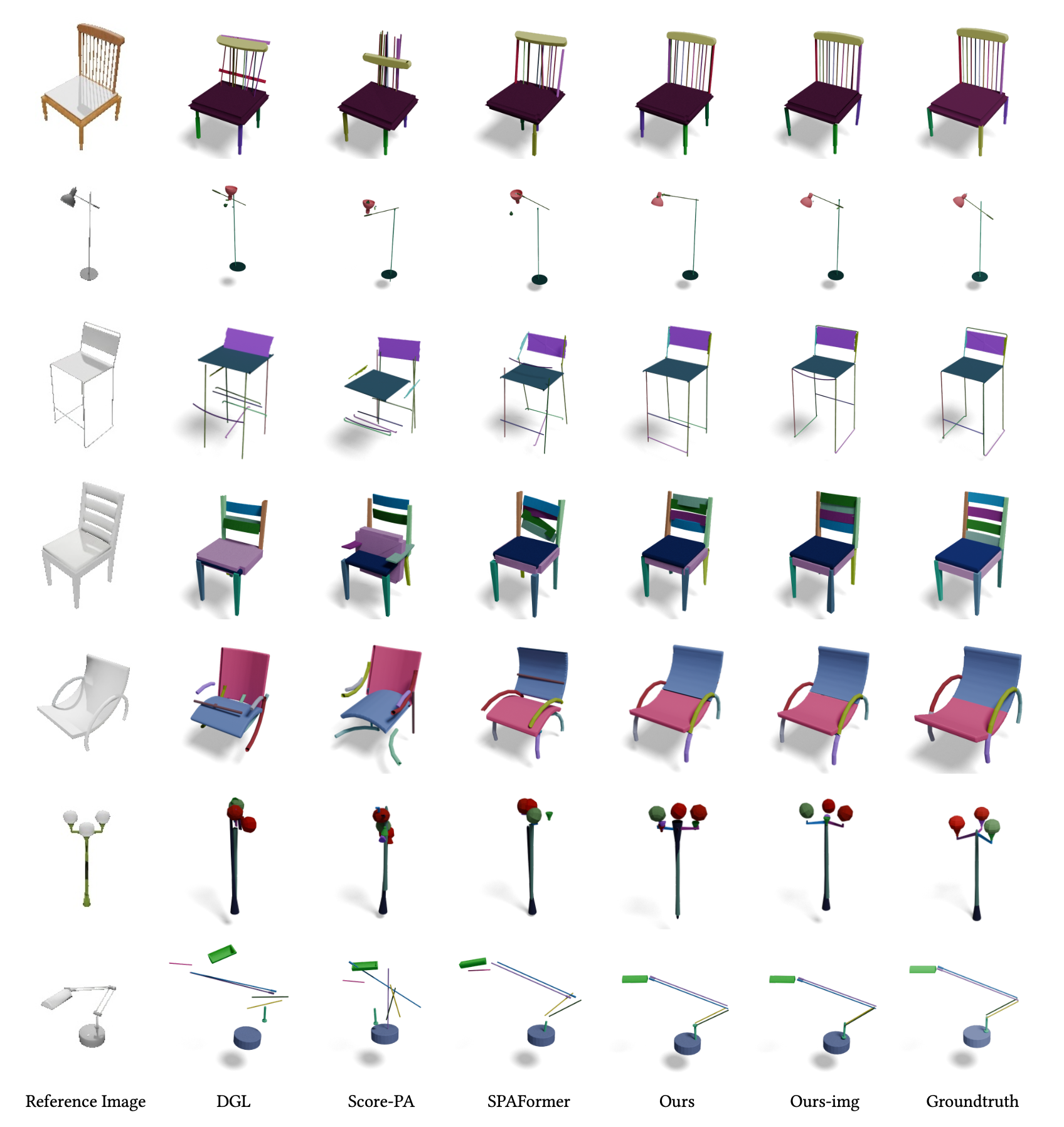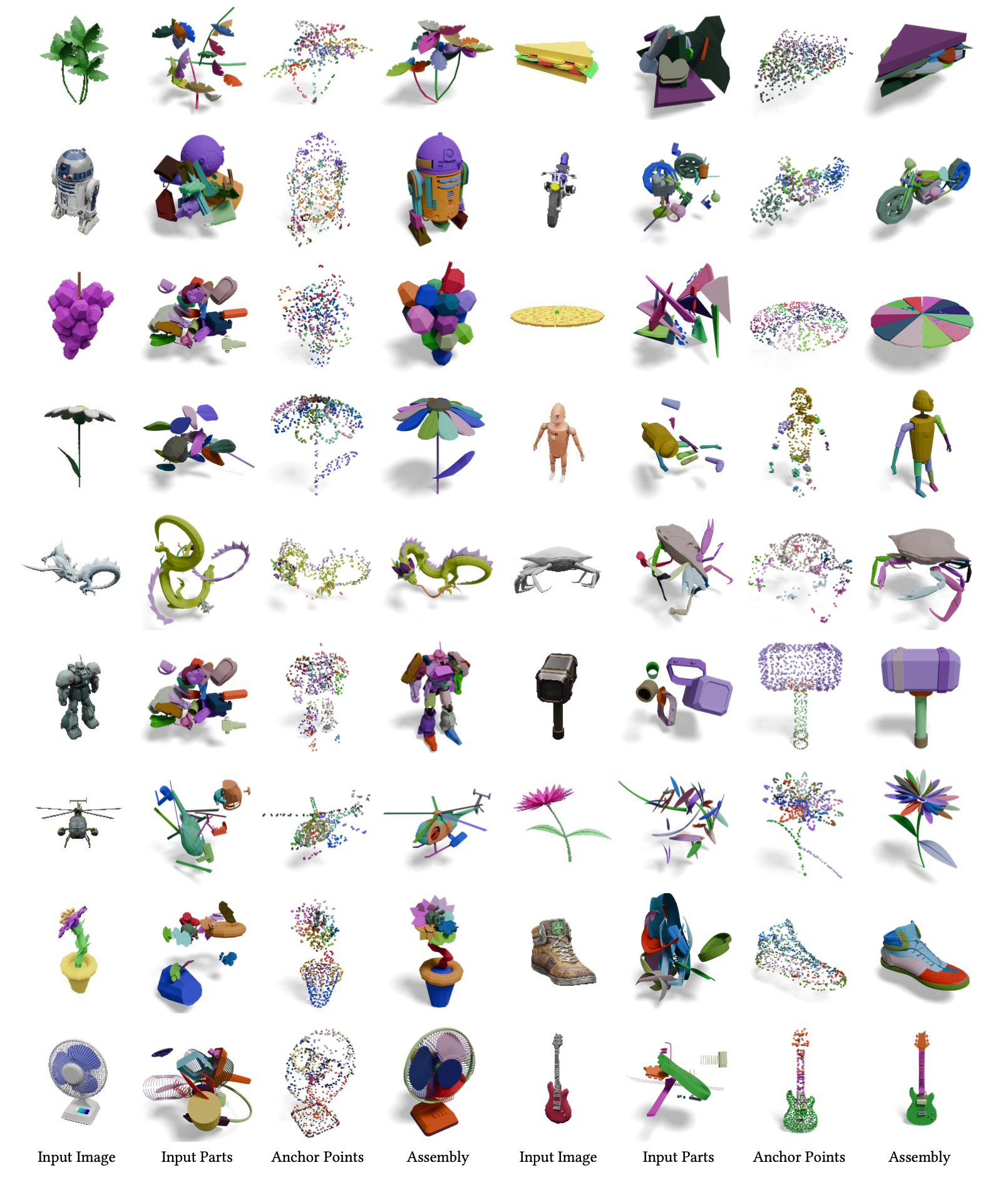Assembler: Scalable 3D Part Assembly via Anchor Point Diffusion
Wang Zhao1,
Yan-Pei Cao2,
Jiale Xu1,
Yuejiang Dong1,3,
Ying Shan1
1ARC Lab, Tencent PCG 2VAST 3Tsinghua University
 Given 3D part meshes and a condition image, Assembler can effectively assemble them into a complete 3D object. Parts are labeled in different colors.
Given 3D part meshes and a condition image, Assembler can effectively assemble them into a complete 3D object. Parts are labeled in different colors.
1ARC Lab, Tencent PCG 2VAST 3Tsinghua University
SIGGRAPH ASIA 2025
 Given 3D part meshes and a condition image, Assembler can effectively assemble them into a complete 3D object. Parts are labeled in different colors.
Given 3D part meshes and a condition image, Assembler can effectively assemble them into a complete 3D object. Parts are labeled in different colors.



